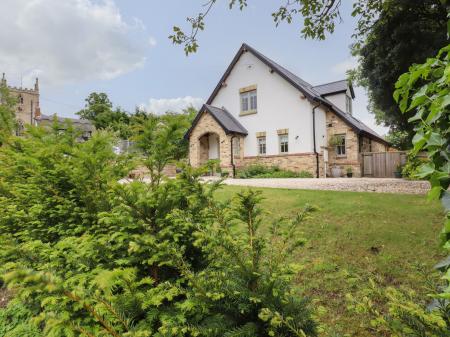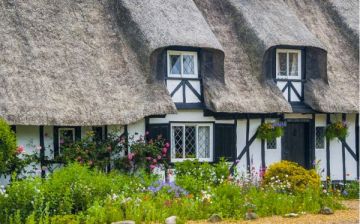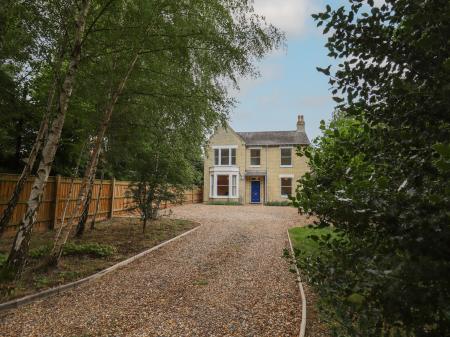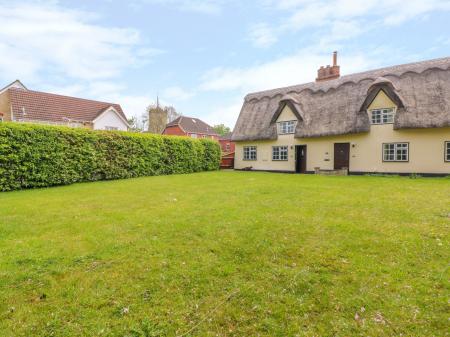
The abbey was disbanded by Henry VIII in 1539, and the stone was used to rebuild several Cambridge colleges, including Trinity, Kings, and Caius. In the 17th century, more building stone from the ruins of the abbey was used to build the striking tower of Ramsey's church, which stands at one end of Abbey Green, near the Abbey Gatehouse.
The gatehouse, now owned by the National Trust, is the sole surviving remnant of the once-powerful abbey. The gatehouse features a 13th-century marble effigy thought to represent Ailwyn, founder of the abbey. The exterior features beautifully carved oriel windows and several fascinating grotesque head carvings.
The town has a long association with the Cromwell family, whose most famous son was Oliver Cromwell, Civil War military leader and eventual Lord Protector. The Cromwell family built a mansion on the site of the Lady Chapel of the old abbey church. This house now forms the core of the highly acclaimed Abbey School.

The Cromwells were responsible, albeit accidentally, for bringing the devastating Great Plague of 1666 to Ramsey. The infection was carried in a bale of cloth brought to the town by the Cromwells. Over 400 inhabitants of Ramsey died, but this was not the end of the town's troubles, for over the next few centuries several terrible fires swept through the town.
The effect of the fires is that modern Ramsey has few buildings of historic interest beyond the parish church of St Thomas a Becket and the abbey gatehouse.
The church dates to the late 12th century and was originally built as a guest house, or hospital, for visitors to the abbey. The chief point of interest in the church is stained glass by the William Morris company.
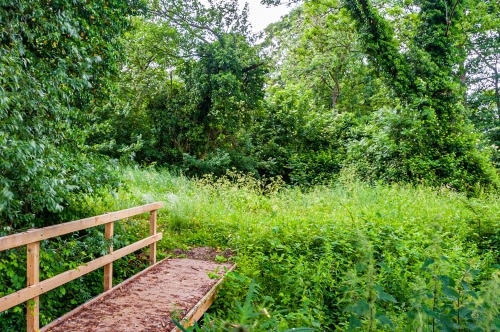
Behind the abbey grounds lies Booth's Hill, site of a 12th-century castle erected (probably illegally) during the tumultuous period of the Civil War between supporters of King Stephen and Queen Maud. Booth's Hill is now a nature reserve, and the castle site is badly overgrown, but an interpretation panel tells the story of what is known - or surmised - about the castle.
After the Dissolution, the abbey passed to the Ramsey family, who built an icehouse on Booth's Hill. The remains of the icehouse can still be seen, though once again the area is badly overgrown.

Ramsey Walled Garden
Standing within the walls of the former Ramsey Abbey is a walled Victorian garden dating to 1840. This one-acre garden has been restored to its former glory and features flowers, vegetables, and fruit. The centrepiece of the garden is a striking 33-metre glasshouse. Highlights include box hedges, an apple tunnel, and a mulberry tree. The garden is maintained by volunteers.
Ramsey Rural Museum
Another attraction located within the former Ramsey Abbey grounds, the rural museum stands on the site of a 17th-century wool yard and displays the rich history of the Ramsey area through displays of local agriculture, farming, trades, and social history. The museum hosts over 4,000 artefacts including farm machinery, all housed in restored 17th-century farm buildings.

Ramsey Mortuary Chapels
This pair of beautiful Victorian chapels, one Anglican and the other non-conformist, are linked by an octagonal bell tower. The chapels were built in 1858 and feature unusual 'contagion windows', allowing mourners to view the casket of the deceased person without the risk of catching a contagious disease.
The Lady Chapel
Abbey House in Ramsey, part of the Abbey School, is built over the remains of a 13th-century building known locally as the Lady Chapel. The chapel formed part of Ramsey Abbey and features trefoiled arches and richly carved foliated capitals. Unfortunately, Abbey House is a private residence and the Lady Chapel is ordinarily only open to visitors on designated heritage open days each year.

The Memorial Clock
This ornate cast-iron clock was erected in 1888 on Great Whyte as a memorial to the Right Honorable Edward Fellowes, 1st Baron de Ramsey. It was made by Macfarlane and Company of Glasgow and was powered by an underground river passing through tunnels beneath the road. It was converted to run on electricity early in the 20th century.
The Great Whyte Tunnels
Great Whyte is a broad street running north from Ramsey's High Street The name 'whyte' comes from the Saxon word 'waite', for a dock, since this was where the Bury Brook ran on its way to join the River Nene. The waterway was covered over in 1852 and now runs through a series of tunnels under the modern streets of Ramsey. Many of these tunnels can be accessed by visitors at designated times.
In the nearby village of Ramsey Forty Foot is Bodsey House (privately owned), established in the 13th century, and used as a country home by the last abbot of Ramsey.
 We've 'tagged' this attraction information to help you find related historic attractions and learn more about major time periods mentioned.
We've 'tagged' this attraction information to help you find related historic attractions and learn more about major time periods mentioned.
